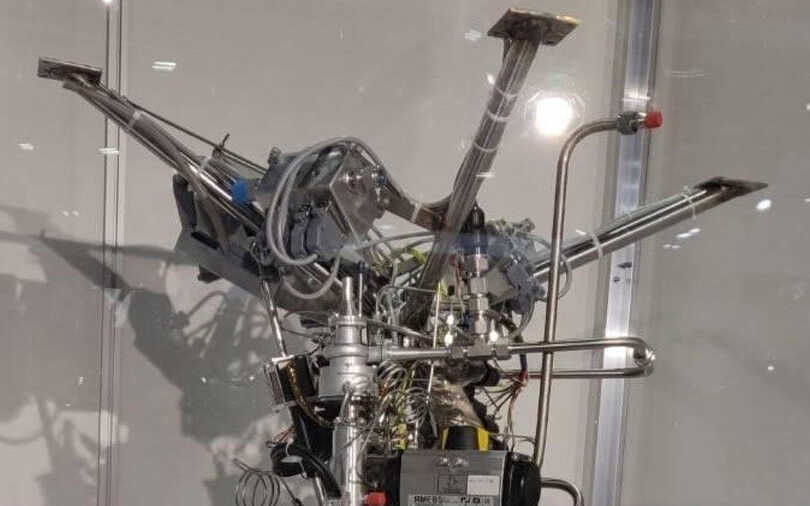
Space startup Agnikul Cosmos readies to launch internet satellites on its shuttle


Agnikul Cosmos, an Indian space tech startup, is readying to launch low Earth orbit (LEO) satellites for satellite internet companies aboard its space shuttle Agniban by mid next year. Confirming the development, the startup's co-founder and chief operating officer, Moin SPM, added that Agnikul Cosmos will have a “few” commercial clients that will be sending their satellites aboard Agnibaan, its space shuttle, with their first trial launch. He didn’t, however, name any clients.
Satellite internet services, which will beam down connectivity from a constellation of satellites in LEO, claim they will effectively offer connectivity to rural or far-flung areas in difficult terrain – where laying physical internet cables is difficult or perilous.
Multiple companies are already vying for a share of the Indian market, with SpaceX's Starlink, backed by billionaire Elon Musk, already opening pre-bookings in the country. Bharti Airtel is also working on satellite internet services in partnership with OneWeb, which will eventually deploy 648 LEO satellites as part of its own constellation. Tata Group company Nelco has also reportedly been in talks with global satellite operator Telesat, for setting up its own satellite internet constellation.

Agnikul Cosmos showcased Agnilet, its second-stage rocket engine, at the International Aeronautical Conference (IAC) on October 29. The semi-cryogenic engine was first unveiled in February 2021. Moin stated that each of its second stage engines are fully 3D printed, and do not involve any conventional manufacturing process.
A second stage engine aboard a rocket is used to propel and control the movement of a rocket in space. It comes after a cluster of engines, which form the first stage of a rocket, and fire to push a rocket up from Earth to space. The first stage rocket engines continue until a rocket reaches critical speed, which is when the spacecraft’s velocity is fast enough to cut through the dense atmospheric air. The first stage is separated after this, and the second stage takes over control.
A semi-cryogenic engine substitutes liquid hydrogen, used in a conventional rocket engine, with refined kerosene. It combines the latter with liquid oxygen to produce its combustion cycle. The key advantages are that it is lighter than conventional rocket fuel, as well as the ability of kerosene to be stored at normal temperature – unlike liquid hydrogen.

The full 3D printing process has allowed Agnikul to make its engine scalable, which according to Moin, can be printed fully in 72 hours. This manufacturing turnaround process, Moin said, will allow the Agnibaan rocket to be operated in a plug-and-play format – where it can be purpose built for mission orders and requests that Agnikul receives from its clients.
“Depending on the volume, the entire manufacturing process of an Agnilet second stage engine costs anywhere between Rs 10-15 lakh. In comparison, all factors taken together, a conventional rocket engine costs almost 5x to be manufactured,” Moin said.
The Indian Space Research Organization (ISRO), had said earlier this year, that it was readying low-cost satellite launch vehicles that would cost around Rs. 30-35 crore. In October, Sarah Al Amiri, the Chairperson of the United Arab Emirates’ Space Agency, told India today, that the country would like to explore ISRO’s low-cost launch vehicles for its smaller satellite projects.

Agnikul has so far signed a memorandum of understanding (MoU) with the Indian Space Research Organisation (ISRO) to use the agency’s facilities for research, testing and development. It has also signed an agreement to host its launches from the Pacific Spaceport Complex in Kodiak Island, Alaska, USA with its operator, Alaska Aerospace Corporation.
Further, Moin claimed that the price of its missions would not alter based on the payloads. Which can encourage smaller ventures to deploy their satellites. He further confirmed that after its first test launch in 2022, the startup will have three or four more orbital space flights – before it finally hosts its first commercial launch.
Talking about how Agnikul’s offering stands apart from SpaceX, the most prominent private space-tech startup in the world, Moin said, “SpaceX right now focuses on bulk volumes and reusability. Agnibaan, however, focuses on flexibility of missions – where our engine and the rocket itself can be built and configured to the exact need of a mission. We can therefore deploy payloads as small as 30kg in space.”

Agnikul Cosmos has so far raised $3.25 million pre-Series A funding from a collective of investors including Pi Ventures and Artha Investment Fund, and $11 million in Series A funding from Mayfield India, alongside existing investors as well as individuals such as Anand Mahindra.
